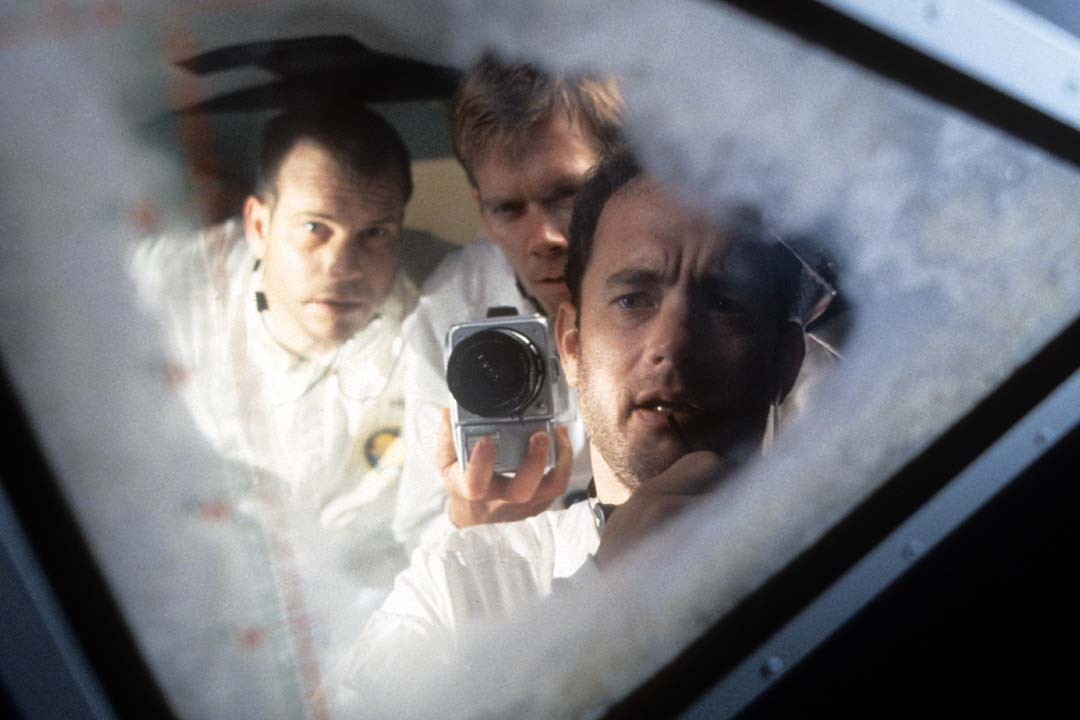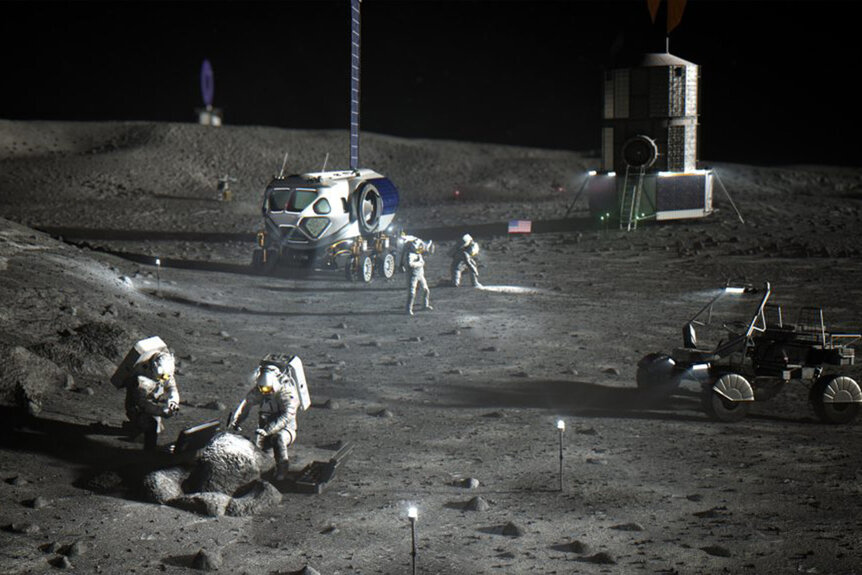Create a free profile to get unlimited access to exclusive videos, sweepstakes, and more!
NASA considers building an oxygen pipeline on the Moon
Lunar oxygen, on tap!

By the spring of 1970, the space race was officially over, but the United States continued apace, delivering crew after crew to the Moon. NASA had successfully sent several crews into lunar orbit and returned them home, followed by the successes of Apollo 11 and 12, both of which landed two astronauts on the lunar surface. Apollo 13 would have been the hat trick, three successful landing missions in a row, but it wasn’t meant to be.
Midway between the Earth and the Moon, ground control sent instructions to the crew of Apollo 13, requesting they stir the oxygen tanks. Previous sensor readings had provided some unusual numbers and the thinking was that stirring the tanks would get rid of any settling or stratification and return more accurate pressure readings. The crew flipped a switch which kicked on fans inside the tanks for a few seconds, then they were turned off. A minute and a half later, the crew heard what they described as ‘a pretty loud bang.” At the same time, electrical power, attitude control, and communication with Earth went on the fritz.
An investigation later revealed that damaged teflon on wires inside oxygen tank 2 caused a short which set some insulation on fire. The fire caused an increase in pressure inside the tank which ultimately caused an explosion. Oxygen in tank 2 was lost and the force of the explosion caused oxygen valves on two of the fuel cells to close, rendering them nonfunctional. That would have been bad enough, but the failure of tank 1 also damaged tank 2, causing it to leak oxygen into space. As the oxygen depleted, the remaining fuel cells also shut down and the craft had only internal batteries and a small amount of reserve oxygen to rely on.
RELATED: Splashdown: Orion returns safely from the Moon! What’s next for NASA’s ambitious Artemis program?
As you’re probably aware, everything turned out about as well as we could have hoped. Through the combined efforts of the crew and everyone on the ground, not to mention a considerable amount of grit in the face of almost certain disaster, the crew of Apollo 13 returned to Earth alive. If you haven’t watched Ron Howard’s Apollo 13 lately (starring Tom Hanks, Bill Paxton, and Kevin Bacon), do yourself a favor and revisit it on Peacock.
The point is that oxygen is critical to the success of any space mission. It serves not only as a breathable atmosphere for astronauts but also as an important component of onboard fuel cells and an ingredient in propellant. As the Artemis program aims to return humans to the Moon, with a goal of developing a permanent presence there, a reliable source of oxygen will be a critical ingredient for success.
Peter Curreri, Chief Science Officer at Lunar Resources Inc., recently proposed an innovative solution to the looming lunar oxygen problem. He wants to build a pipeline. According to Curreri, the long-term success of the Artemis program hinges on our ability to utilize resources from the Moon, and he’s probably right. At present, every kilogram of material launched from Earth has a cost in the tens of thousands of dollars. So it makes sense to forage for materials at our lunar destination that will significantly decrease the cost of launch and simplify resource acquisition at the Moon. The current plans include harvesting oxygen ice at the lunar south pole to support astronauts as early as 2026.
The current working process includes harvesting oxygen from a source to be determined at the lunar south pole. Once harvested, the oxygen will be bottled and transported via lunar rover to any number of facilities where astronauts are living and working. Unfortunately, the transportation of oxygen is the most expensive part of the process, far outstripping the cost of harvesting and bottling. Curreri suggests cutting out the middleman and building a pipeline directly from the harvesting site to the end user. Lunar oxygen on tap.
Their proposal was submitted to NASA’s Innovative Advanced Concepts (NIAC) program, where it was awarded $175,000 in funding to further develop the idea. The next steps are a comprehensive design study intended to verify the efficacy of the proposed pipeline. If approved, the pipeline will not only provide a ready source of oxygen without having to launch it from Earth or transport it manually across the lunar surface, but it will also be constructed using materials from the Moon.
The proposal indicates that the Lunar South Pole Oxygen Pipeline (L-SPOP for short) would be constructed entirely or almost entirely by remotely controlled robots, with materials gathered from the lunar surface. It will also be modular and capable of being repaired or expanded upon one piece at a time. Whatever we’re going to do, we’re going to need to figure it out soon. Artemis II, which will fly a human crew around the Moon and back to Earth, is tentatively scheduled for Spring 2024. Artemis III will follow a year later and will deliver a crew to the surface of the Moon. The next phase of humanity’s activities on the Moon is fast approaching, and we’ll all be able to breathe a little easier once we figure out how lunar astronauts can do the same.
In the meantime, prepare for the upcoming space race by revisiting the last one in Space Race, streaming now on Peacock.



























